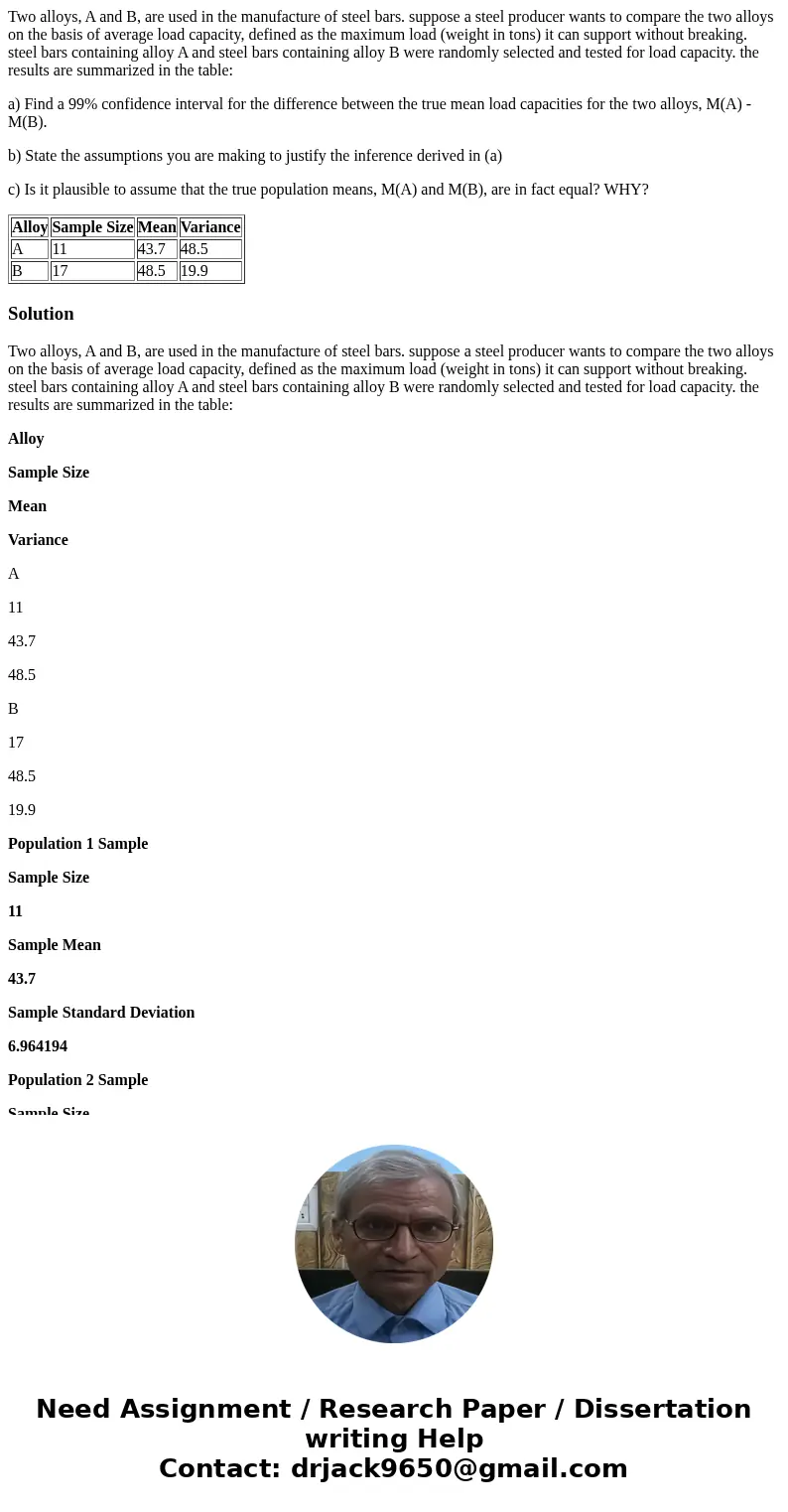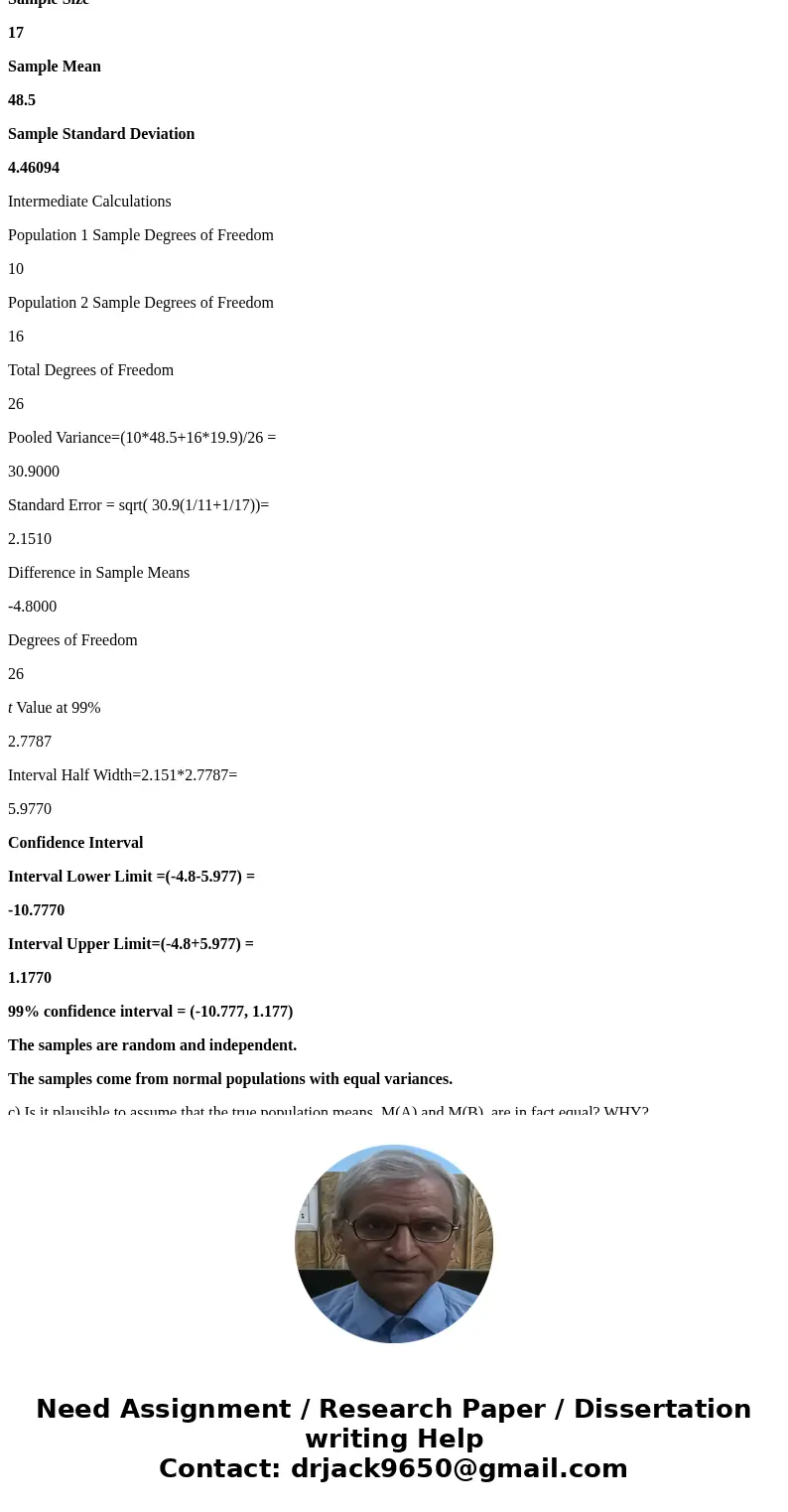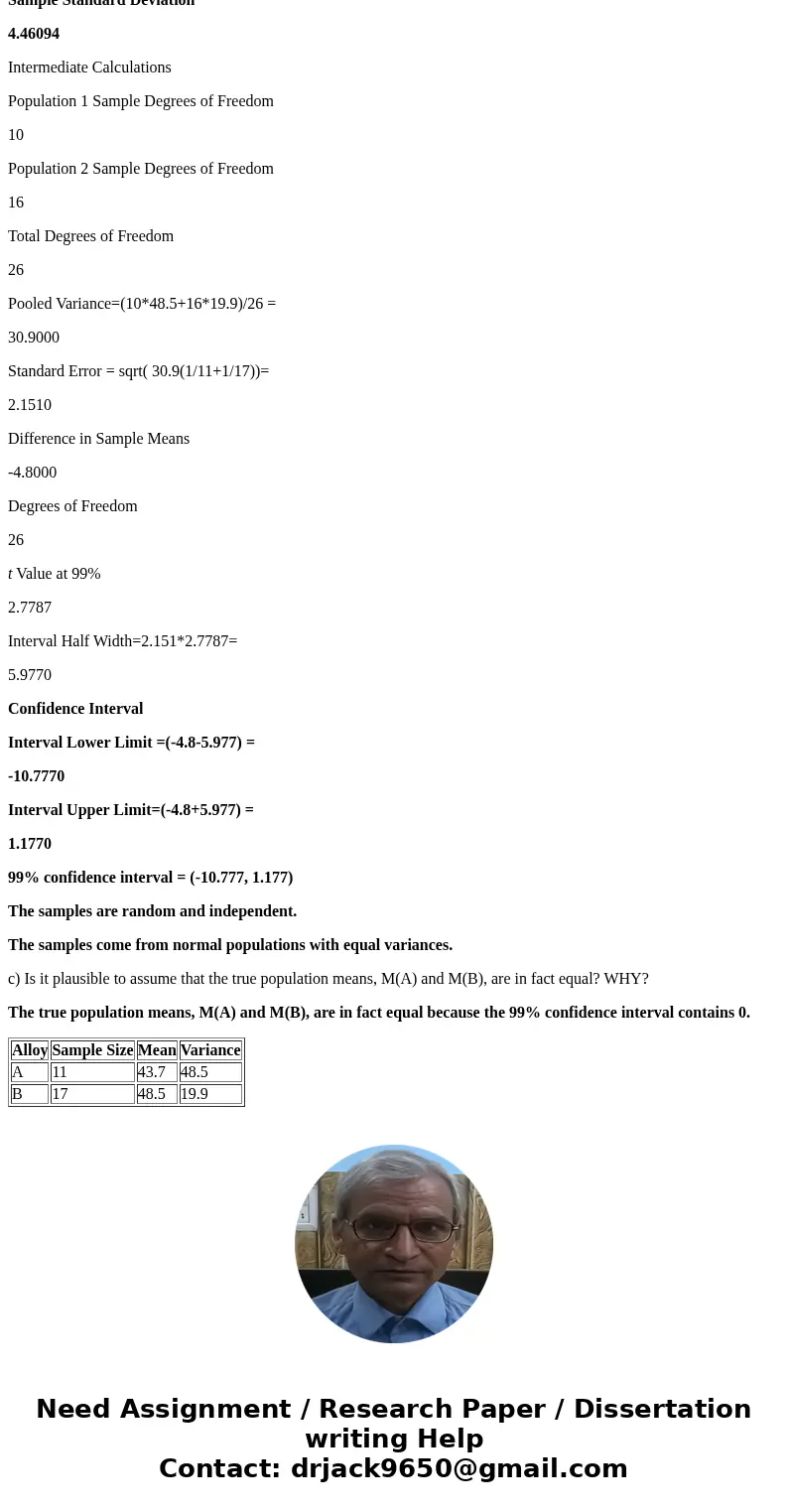Two alloys A and B are used in the manufacture of steel bars
Two alloys, A and B, are used in the manufacture of steel bars. suppose a steel producer wants to compare the two alloys on the basis of average load capacity, defined as the maximum load (weight in tons) it can support without breaking. steel bars containing alloy A and steel bars containing alloy B were randomly selected and tested for load capacity. the results are summarized in the table:
a) Find a 99% confidence interval for the difference between the true mean load capacities for the two alloys, M(A) - M(B).
b) State the assumptions you are making to justify the inference derived in (a)
c) Is it plausible to assume that the true population means, M(A) and M(B), are in fact equal? WHY?
| Alloy | Sample Size | Mean | Variance |
|---|---|---|---|
| A | 11 | 43.7 | 48.5 |
| B | 17 | 48.5 | 19.9 |
Solution
Two alloys, A and B, are used in the manufacture of steel bars. suppose a steel producer wants to compare the two alloys on the basis of average load capacity, defined as the maximum load (weight in tons) it can support without breaking. steel bars containing alloy A and steel bars containing alloy B were randomly selected and tested for load capacity. the results are summarized in the table:
Alloy
Sample Size
Mean
Variance
A
11
43.7
48.5
B
17
48.5
19.9
Population 1 Sample
Sample Size
11
Sample Mean
43.7
Sample Standard Deviation
6.964194
Population 2 Sample
Sample Size
17
Sample Mean
48.5
Sample Standard Deviation
4.46094
Intermediate Calculations
Population 1 Sample Degrees of Freedom
10
Population 2 Sample Degrees of Freedom
16
Total Degrees of Freedom
26
Pooled Variance=(10*48.5+16*19.9)/26 =
30.9000
Standard Error = sqrt( 30.9(1/11+1/17))=
2.1510
Difference in Sample Means
-4.8000
Degrees of Freedom
26
t Value at 99%
2.7787
Interval Half Width=2.151*2.7787=
5.9770
Confidence Interval
Interval Lower Limit =(-4.8-5.977) =
-10.7770
Interval Upper Limit=(-4.8+5.977) =
1.1770
99% confidence interval = (-10.777, 1.177)
The samples are random and independent.
The samples come from normal populations with equal variances.
c) Is it plausible to assume that the true population means, M(A) and M(B), are in fact equal? WHY?
The true population means, M(A) and M(B), are in fact equal because the 99% confidence interval contains 0.
| Alloy | Sample Size | Mean | Variance |
|---|---|---|---|
| A | 11 | 43.7 | 48.5 |
| B | 17 | 48.5 | 19.9 |



 Homework Sourse
Homework Sourse